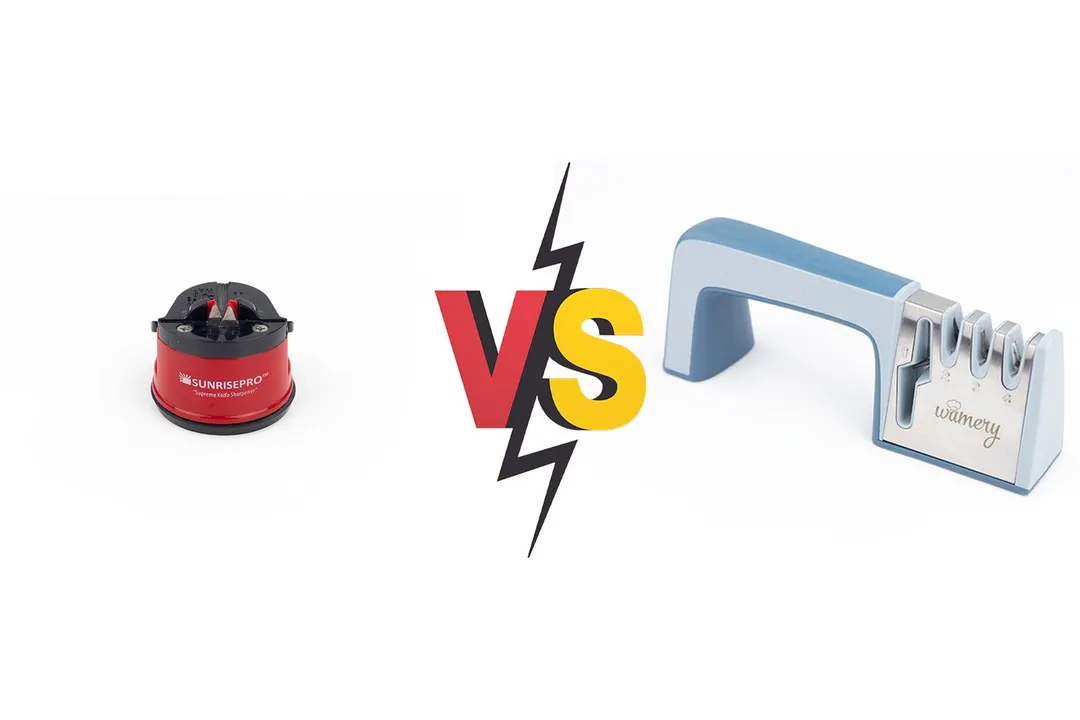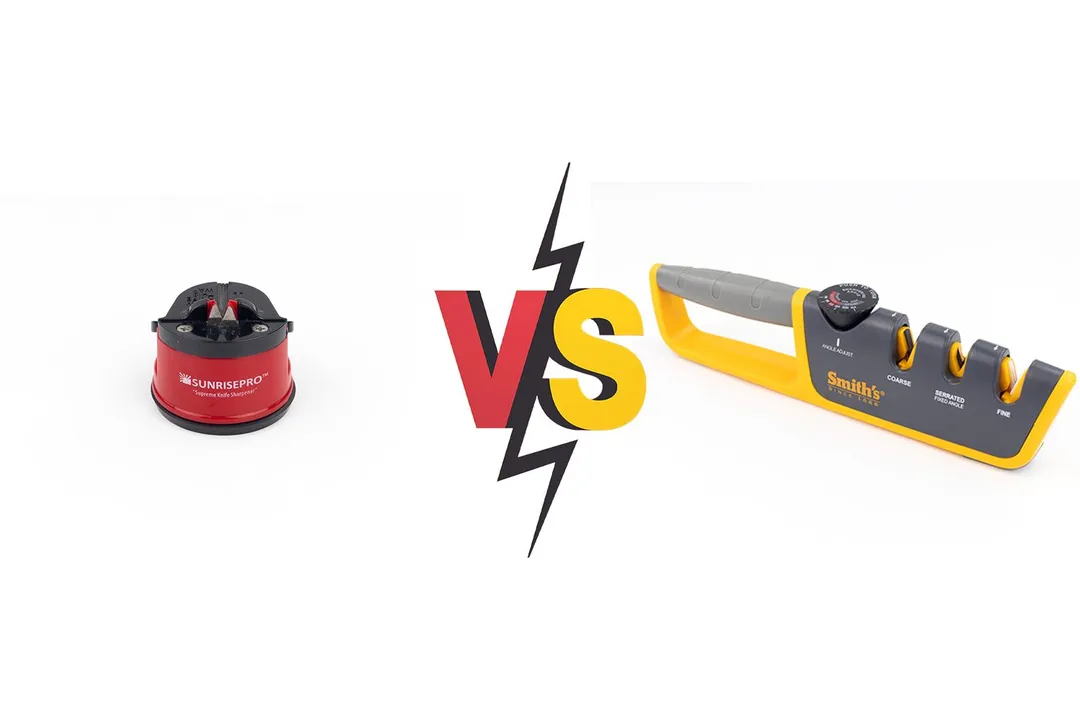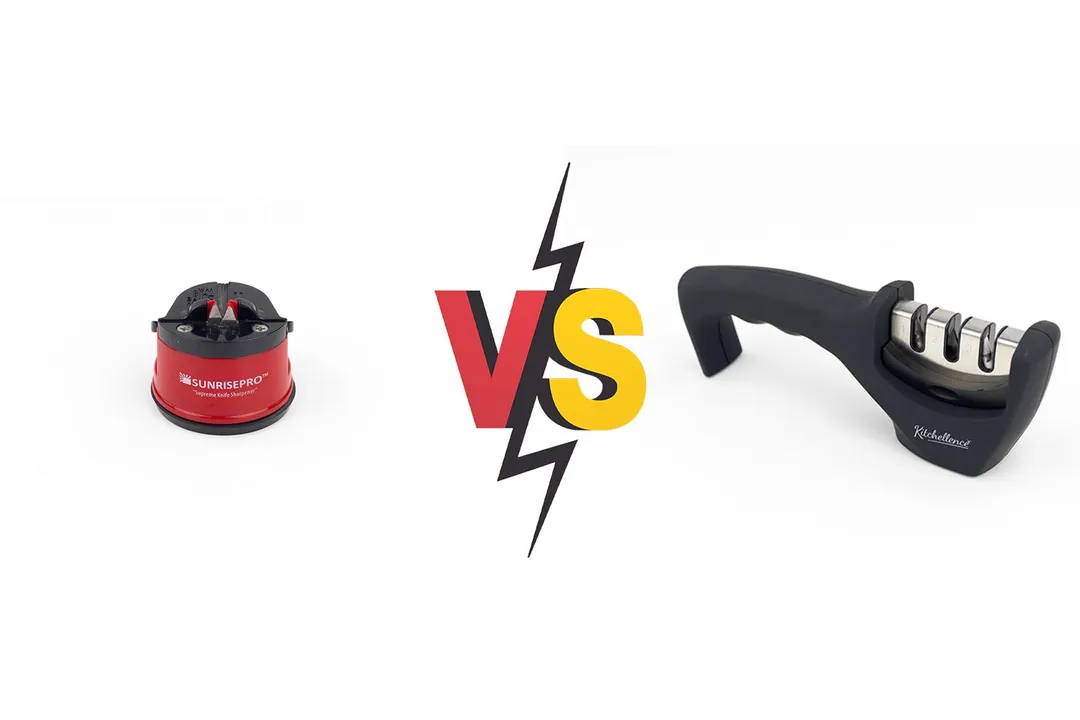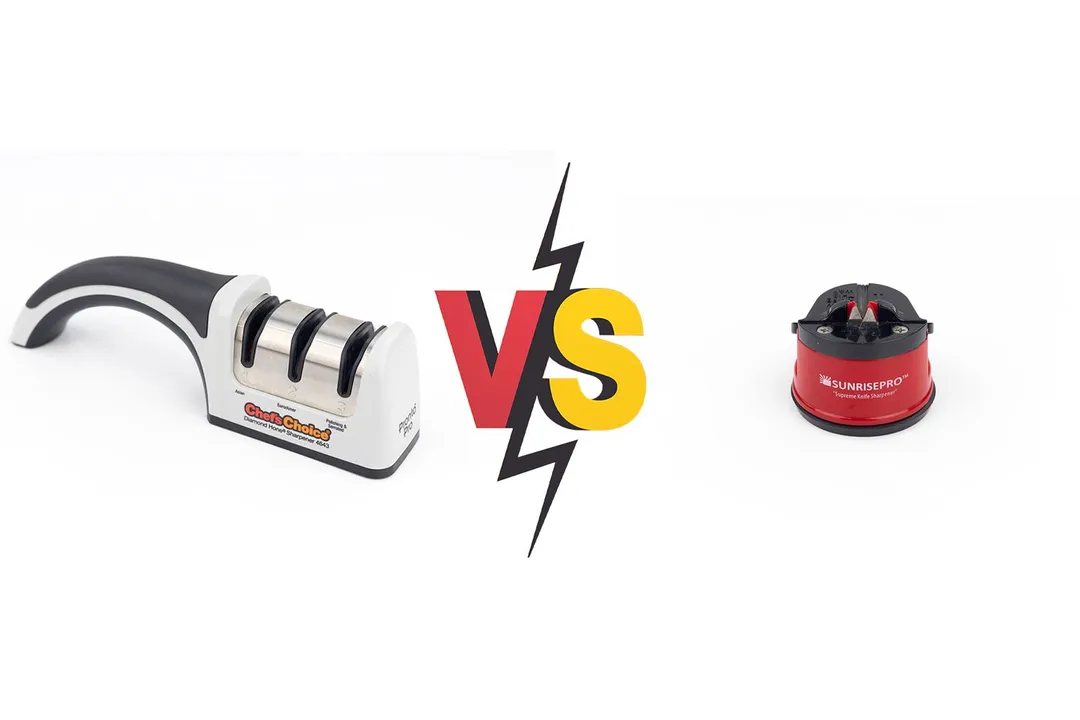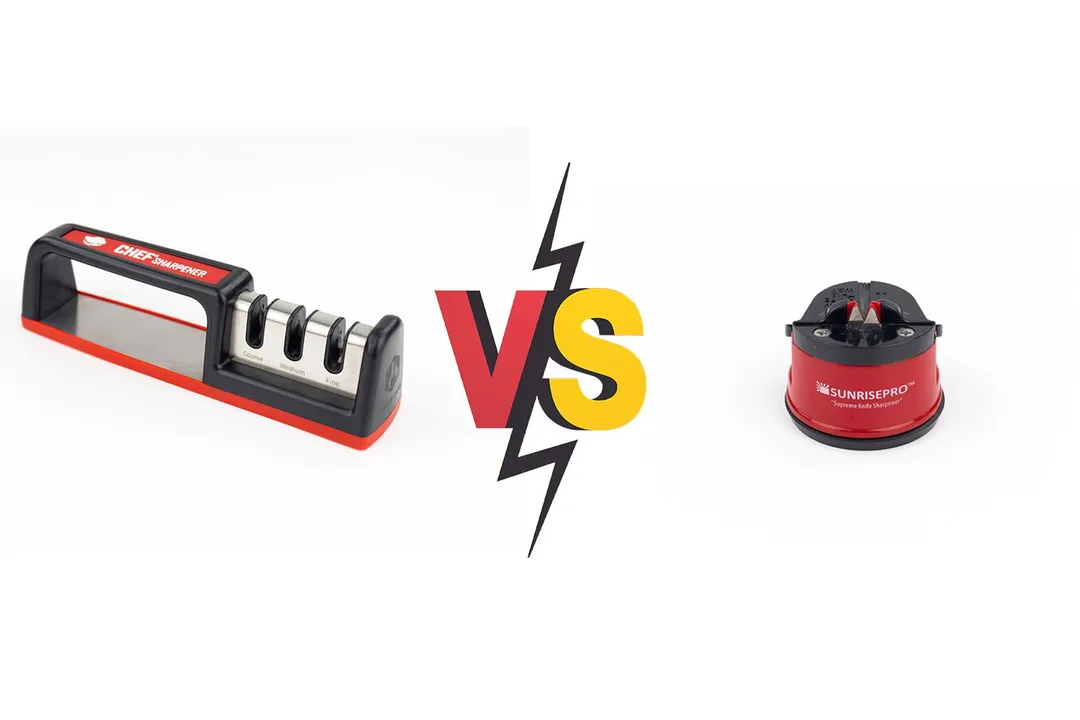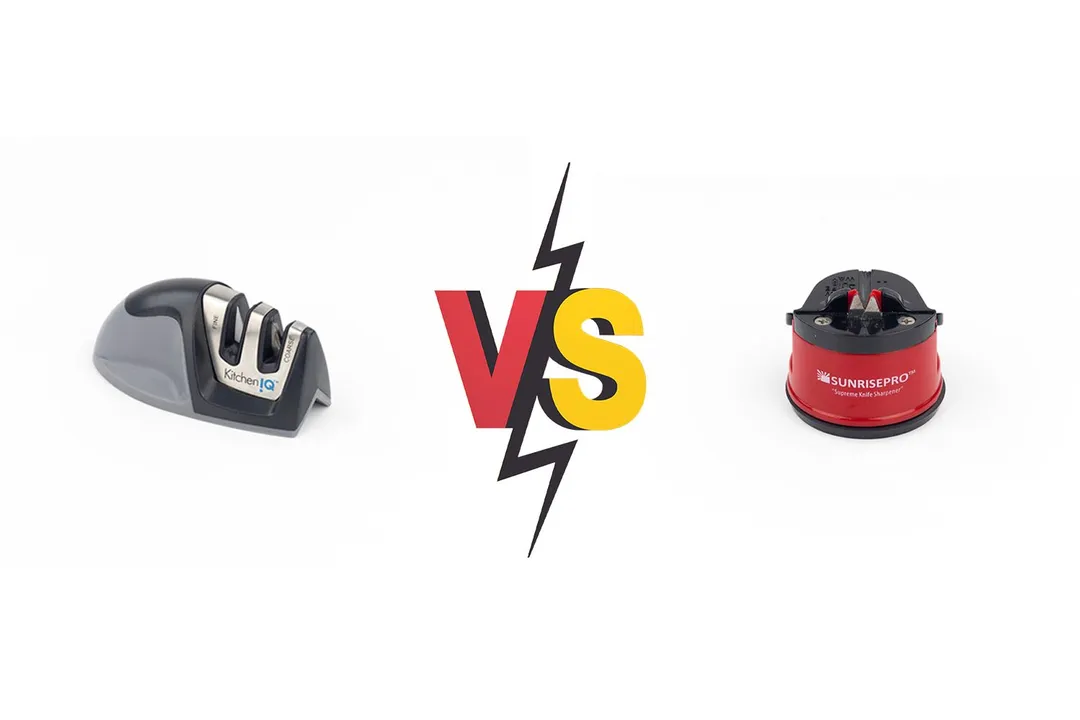Our recommendations are made independently through Research & Testing. We may receive commissions from purchases made via our links.
Amesser A-65 vs SunrisePro Supreme Side-by-Side Comparison
Amesser A-65 vs. SunrisePro Supreme sharpener. Read on for details on how they compare in terms of speed, effectiveness, and ease of use.
Amesser A-65
Tested Using Methodology v1.1SunrisePro Supreme
Tested Using Methodology v1.1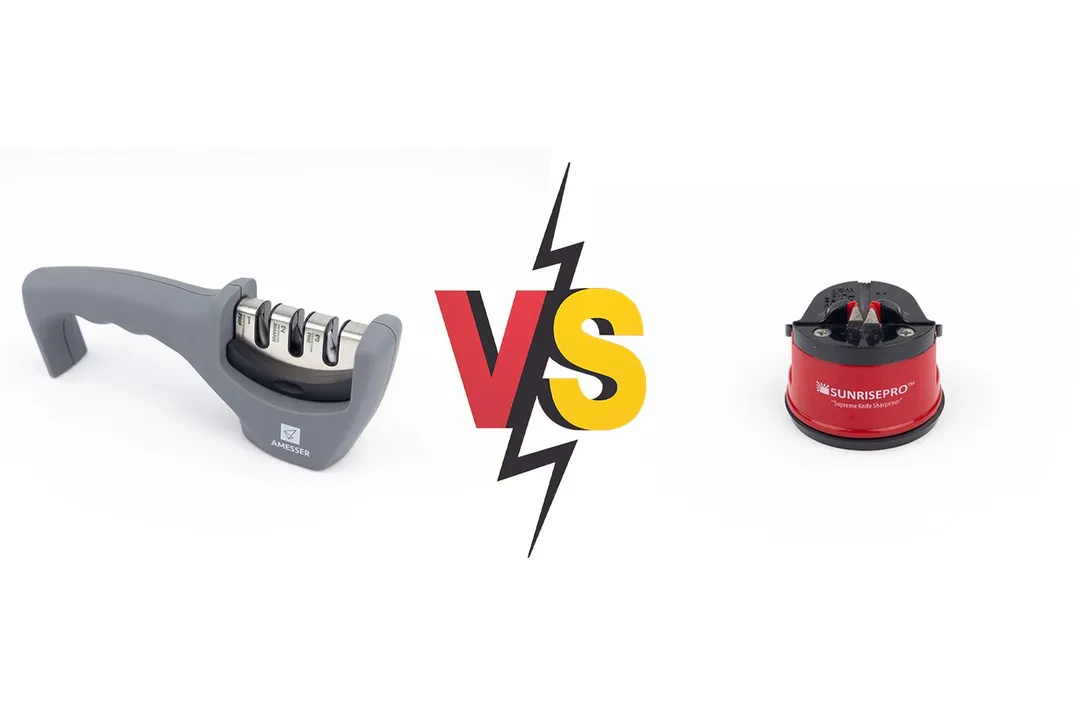
Overall Verdict
The Amesser A-65 and the SunrisePro Supreme are both aggressive sharpeners but the former is slightly more friendly to both the user and the knife’s edge.
The Amesser, while taking off a considerable amount of material from the knife edge produced a smoother edge, as expected with more polishing stages. It also boasts a design that offers more balance and stability and is overall the easier one to work with.
The SunrisePro was faster by a far cry and could produce a keener edge, too. However, it shaved off just as much steel as the Amesser did and performed worse in terms of edge smoothness. With a modest body and a suction base that’s quite picky of the surfaces it sticks to, it didn’t score as well on ease of use either.
Pros & Cons
- Affordable
- Instinctive and easy to use
- Well-built with a solid design
- Grippy and comfortable handle
- Safety glove included
- Strong, sturdy build
- Extremely quick sharpening
- Great sharpness
- Affordable price
- Strong suction base (while it works)
- Tapered base
- High center of gravity
- Suction base is surface-discriminatory
- It can peel off a lot of metal
Key Specs
Where to Buy
*You help support HealthyKitchen101's product testing and reviews by purchasing from our retail partners.
Analysis and Test Results
Performance
Sharpening Time to Cut a Lemon
Material Retention



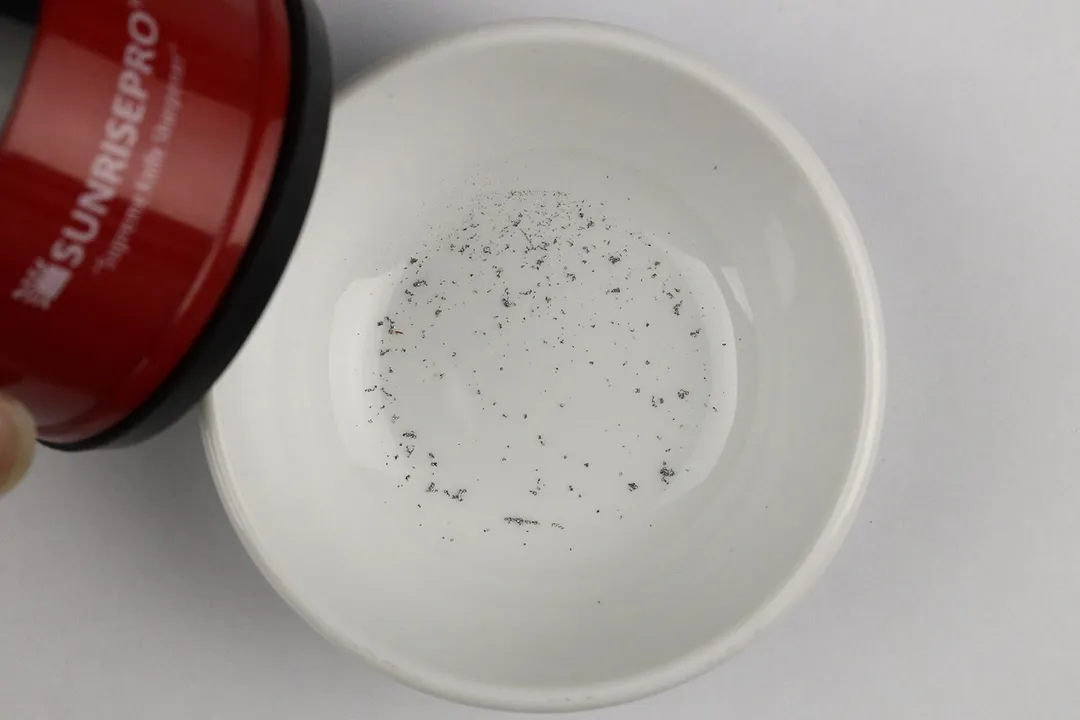

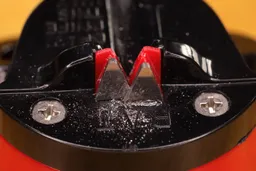
Maximum Sharpness Achieved
Edge Smoothness

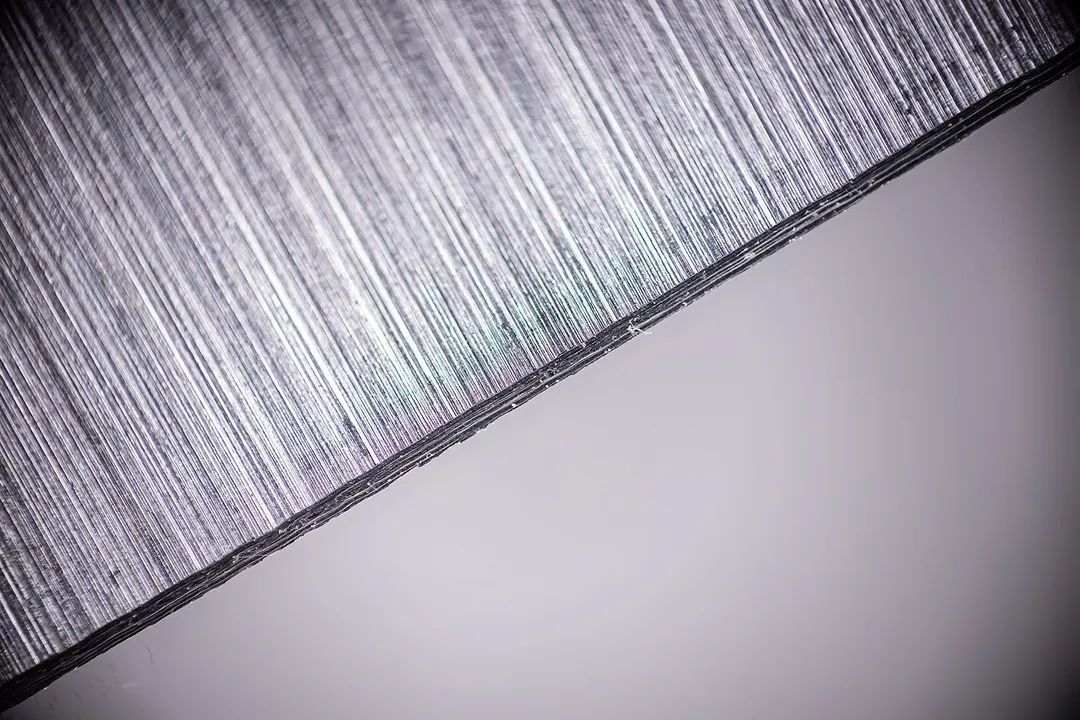
Design
In the Box

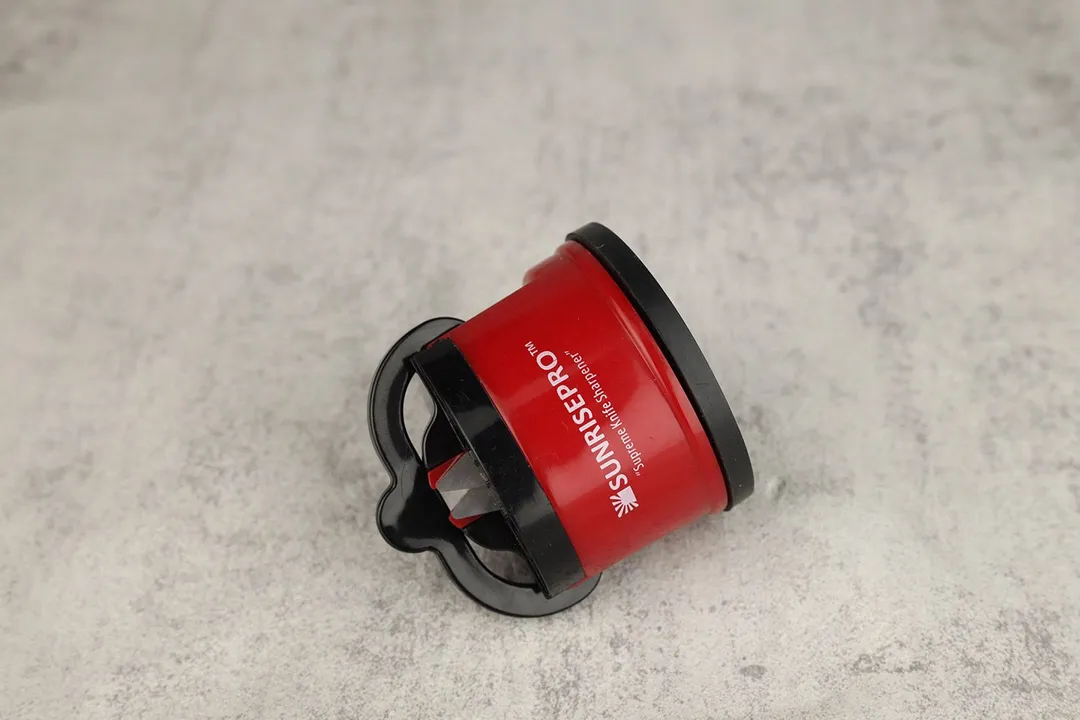
Dimensions
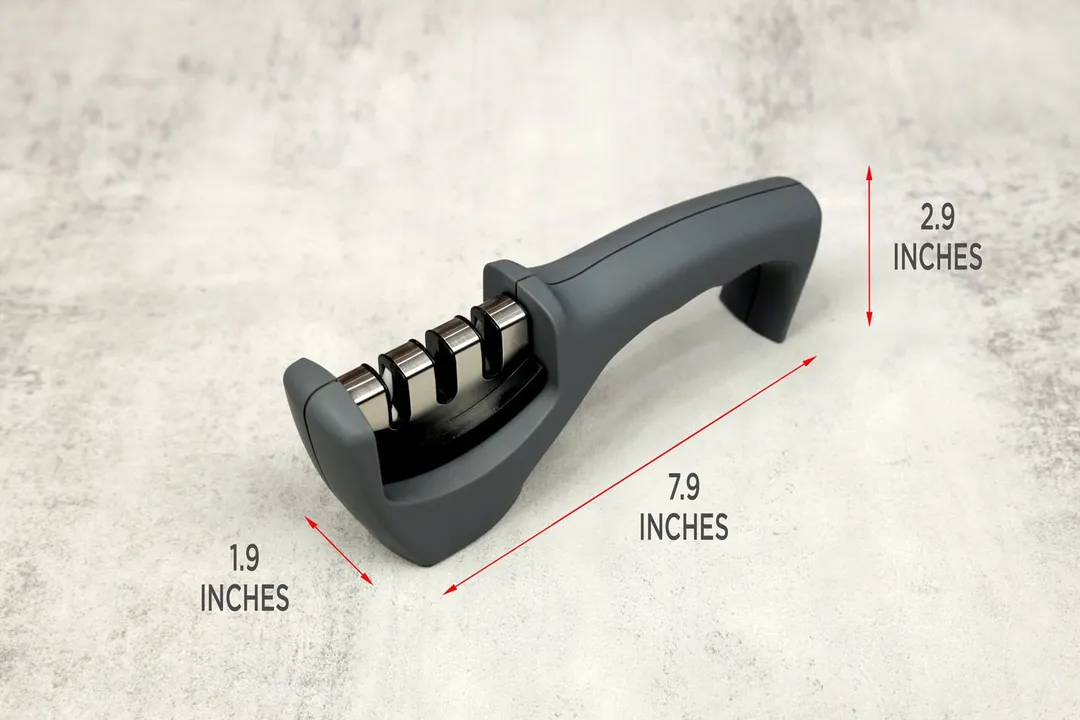
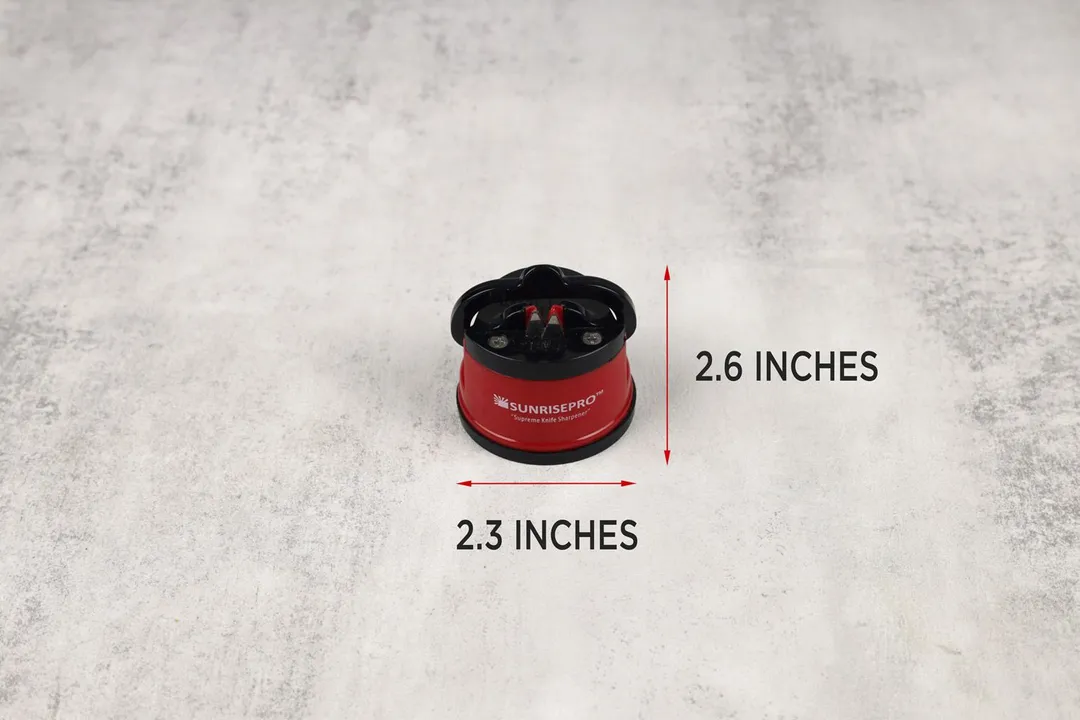
Build Quality
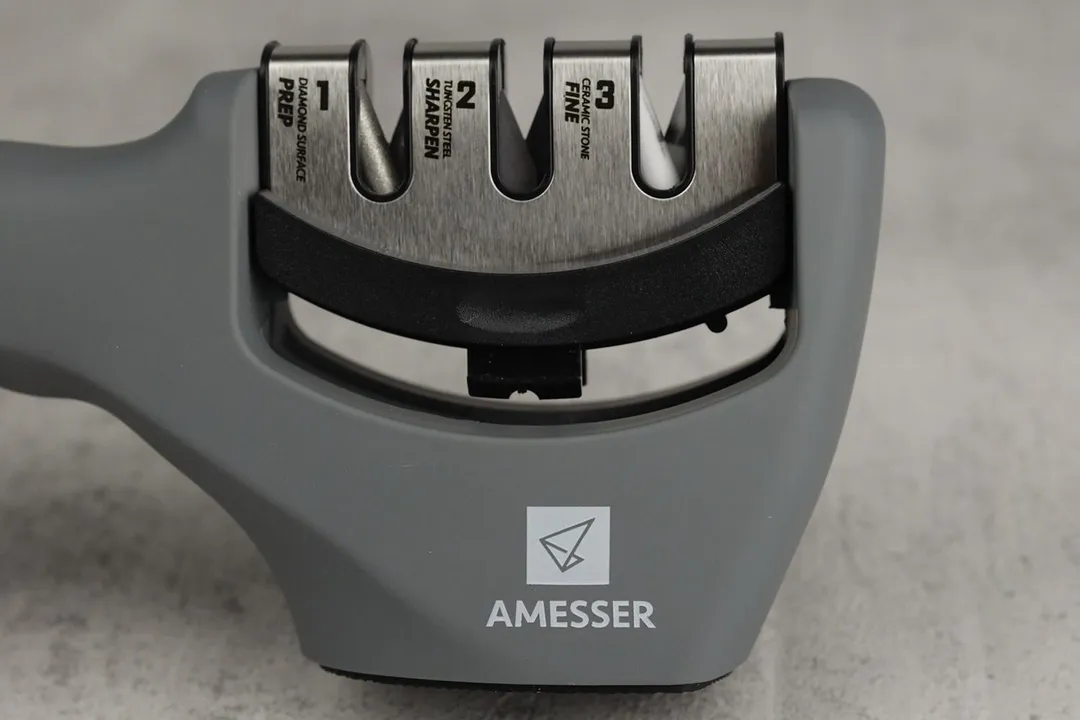
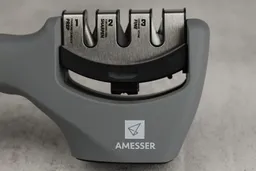
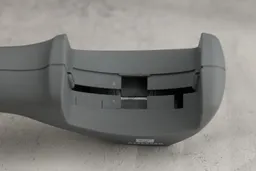
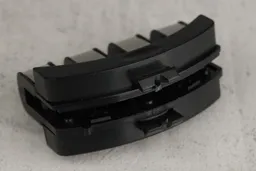
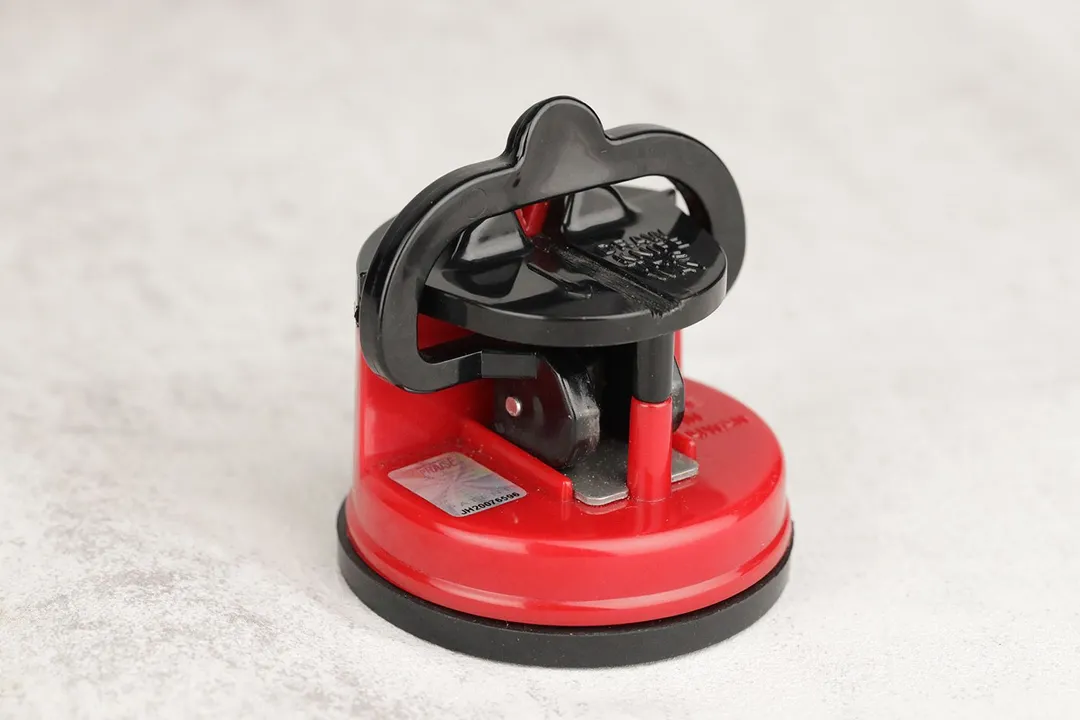
Working Section
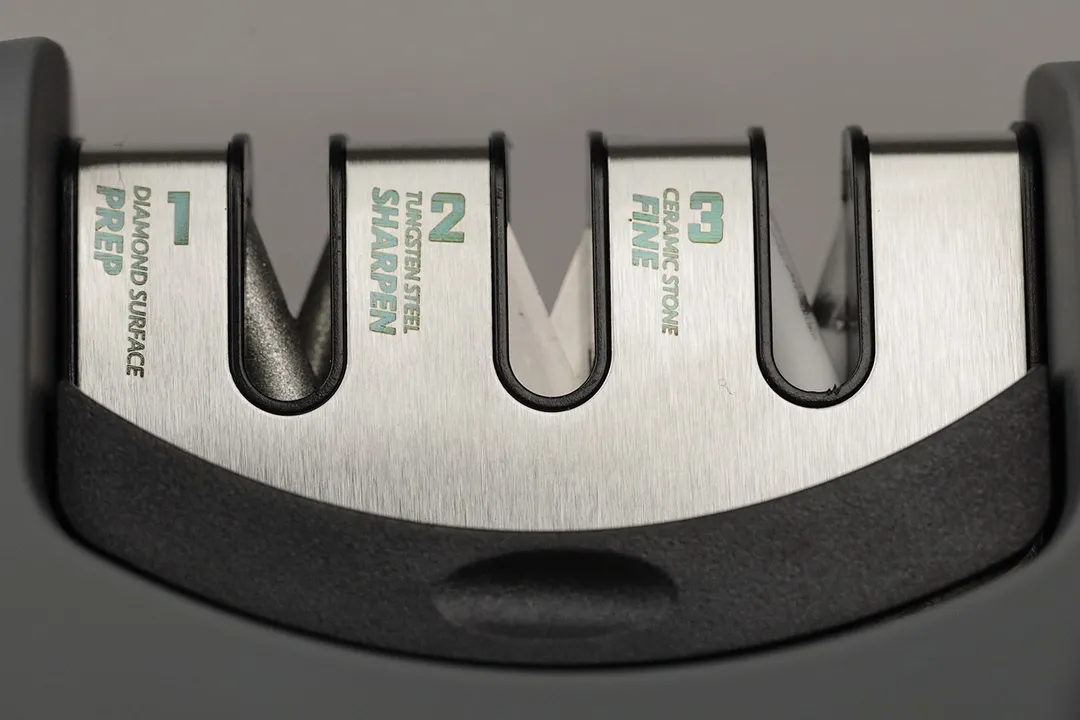
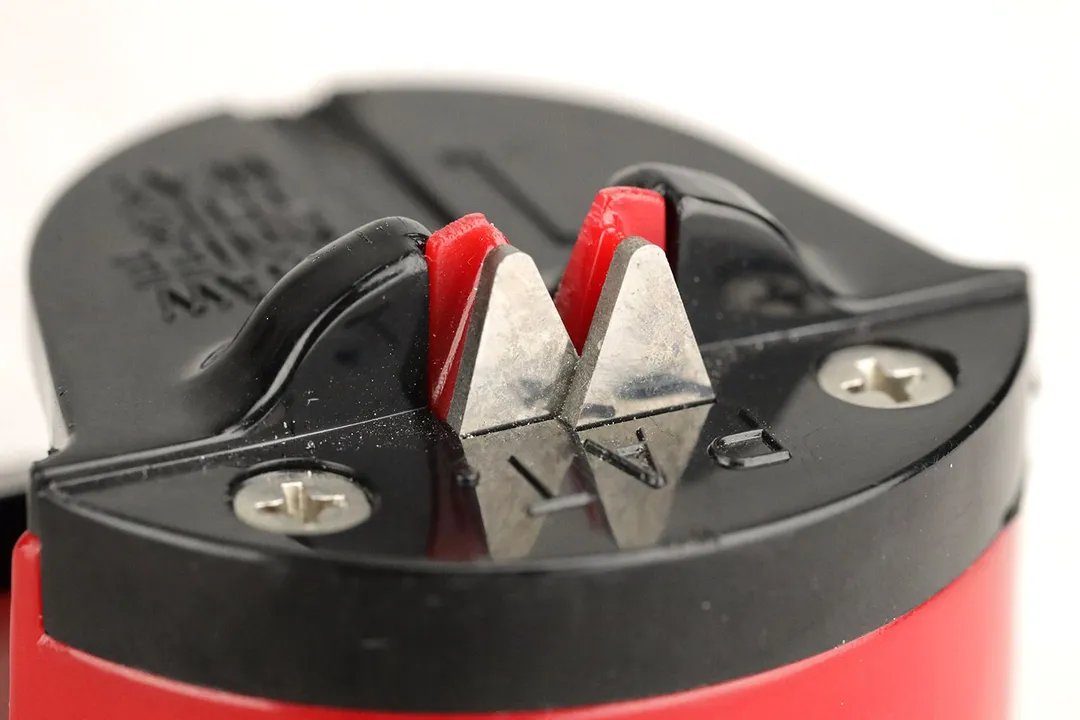
Base
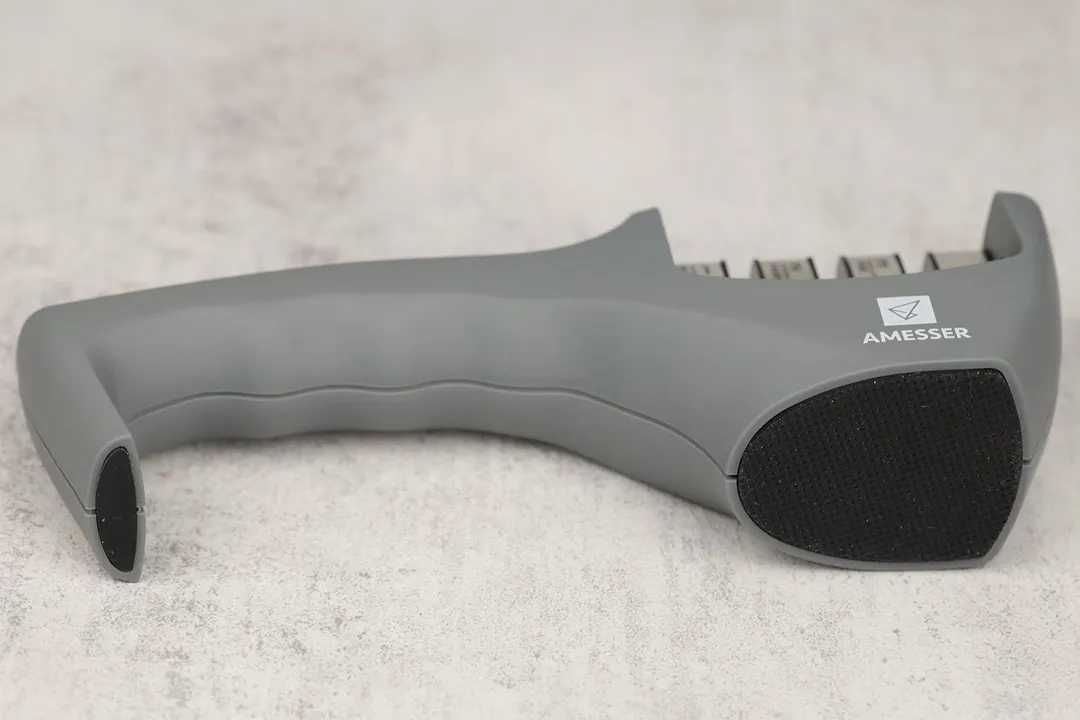
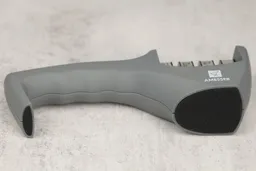
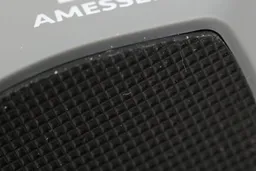
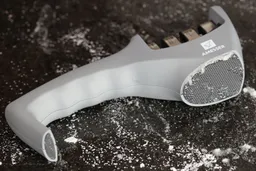
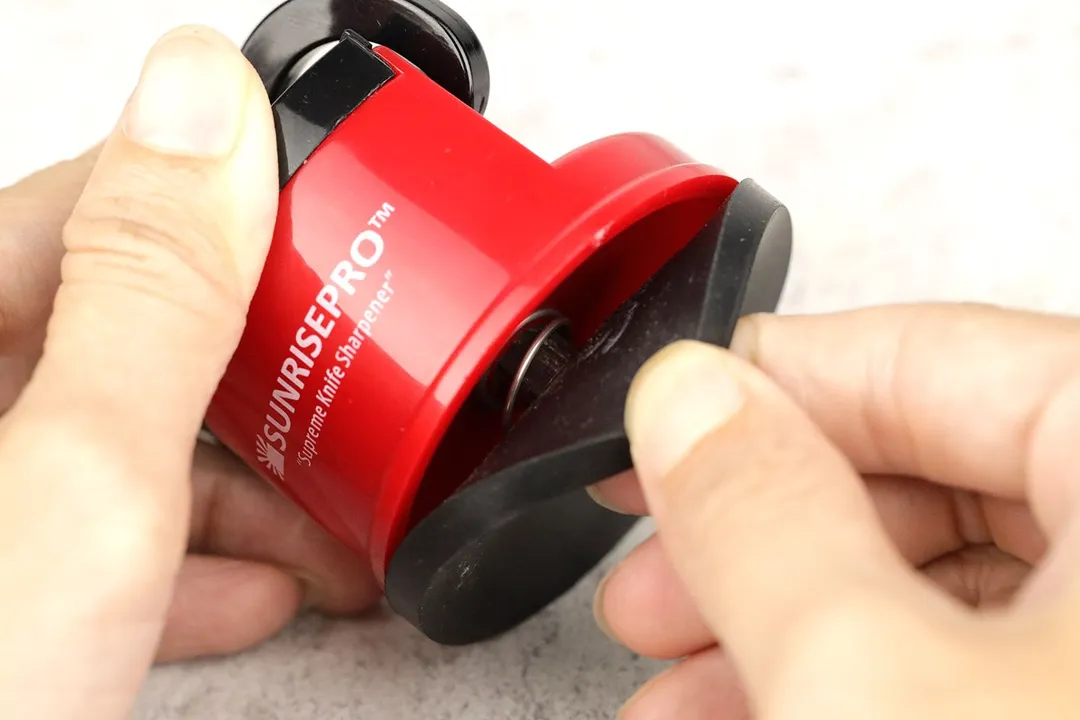
Grip

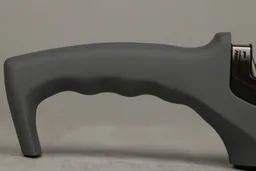

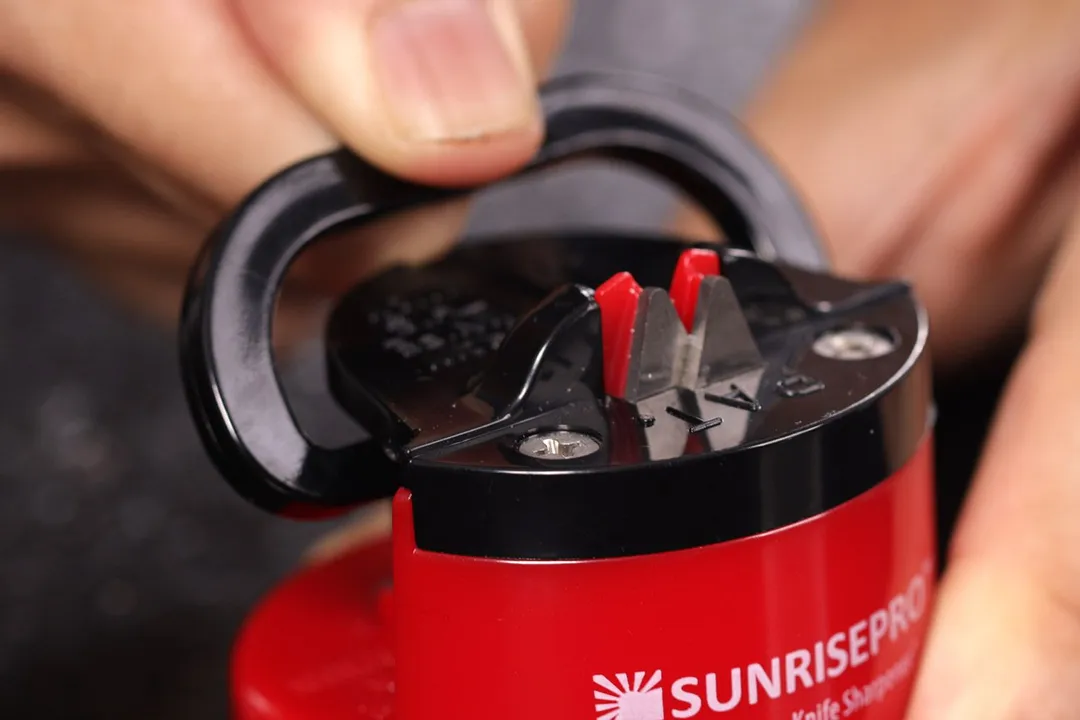
Usability
Slot Arrangement
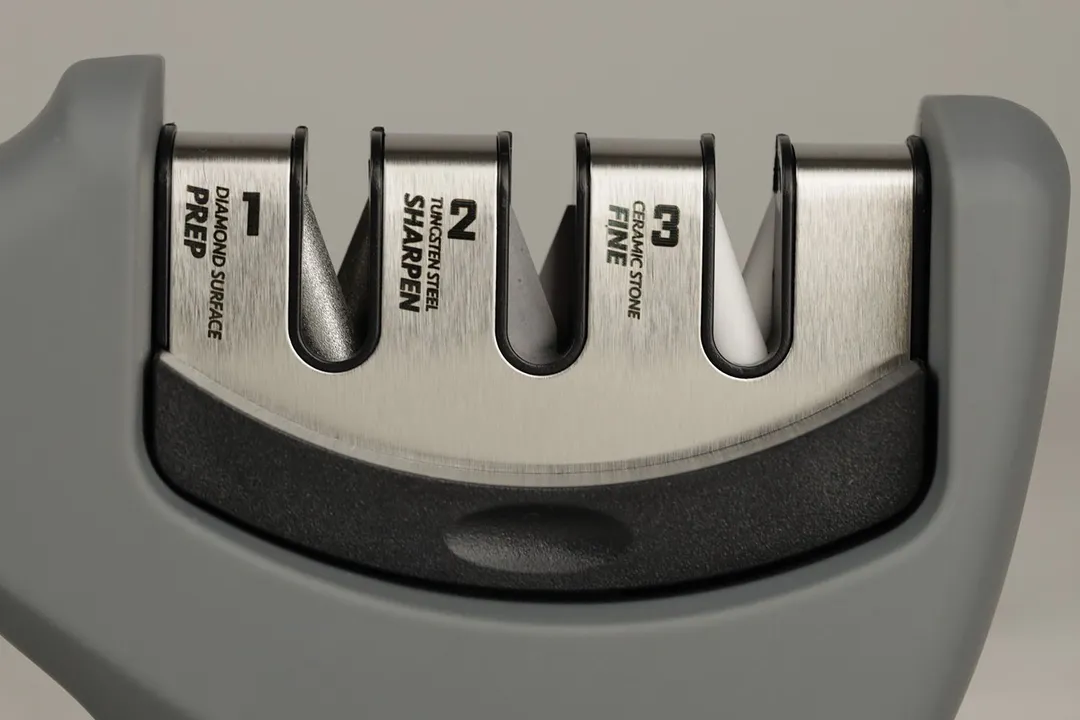
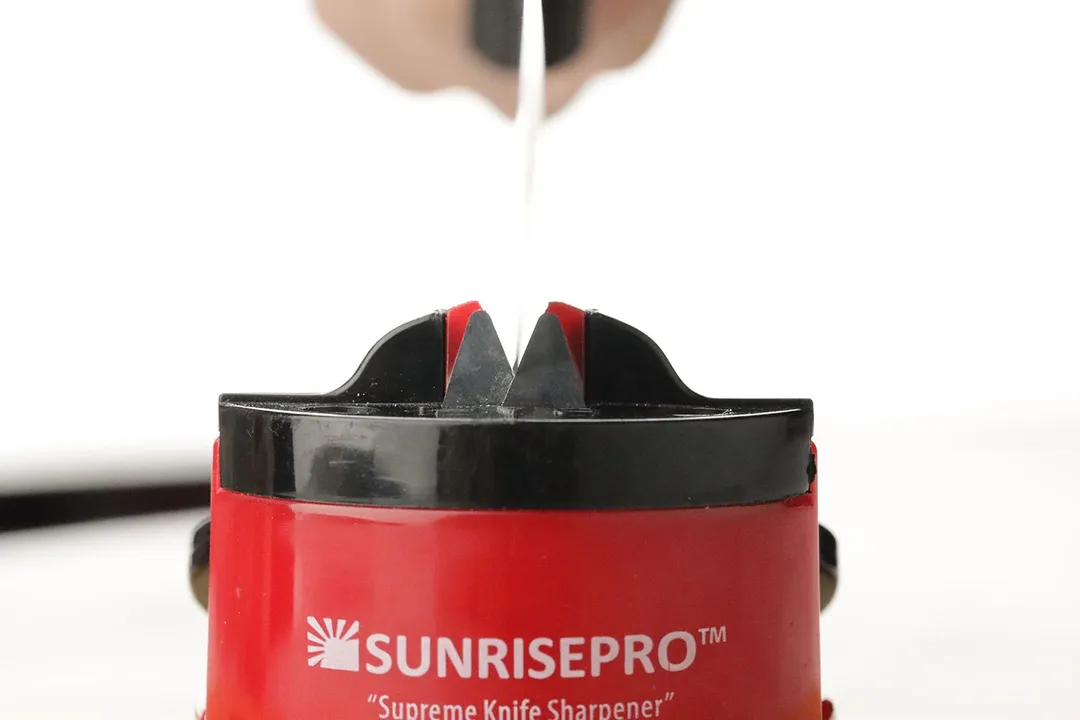
Insertion
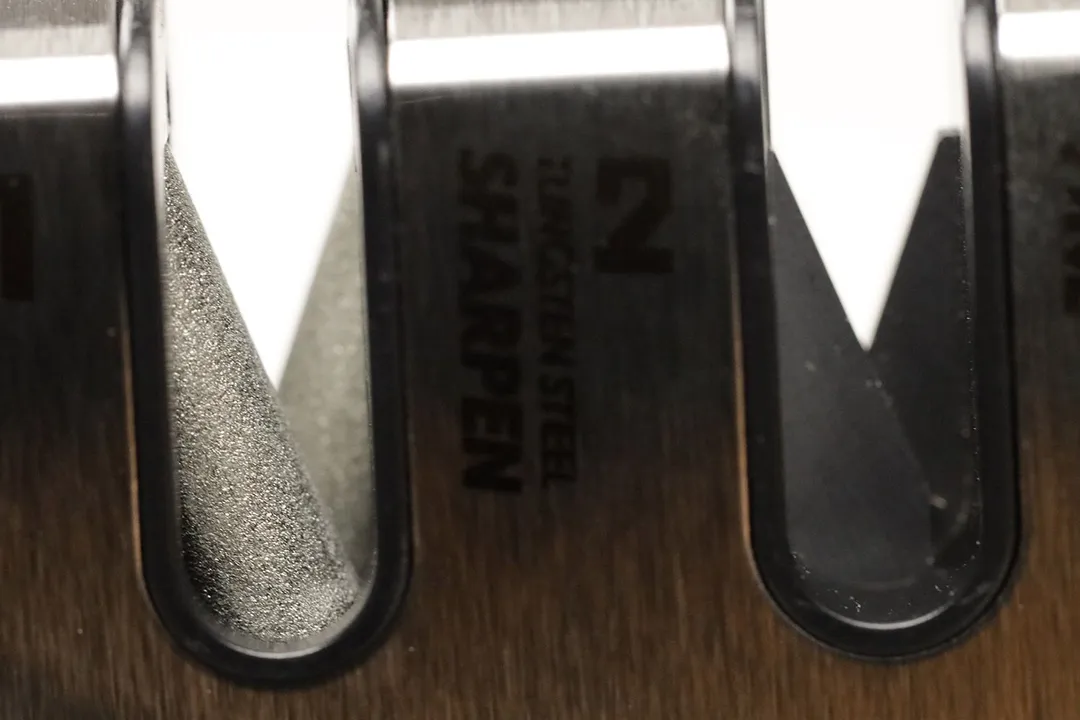
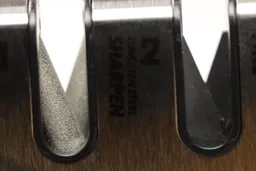
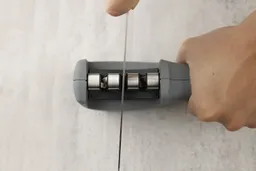
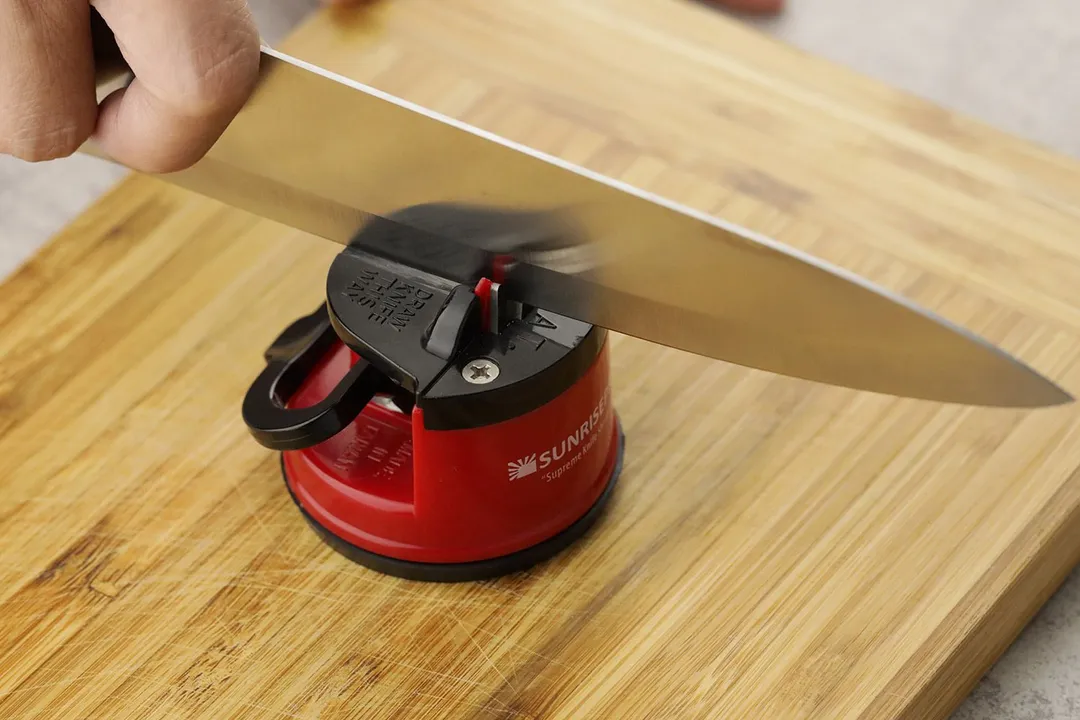
Pulling Through
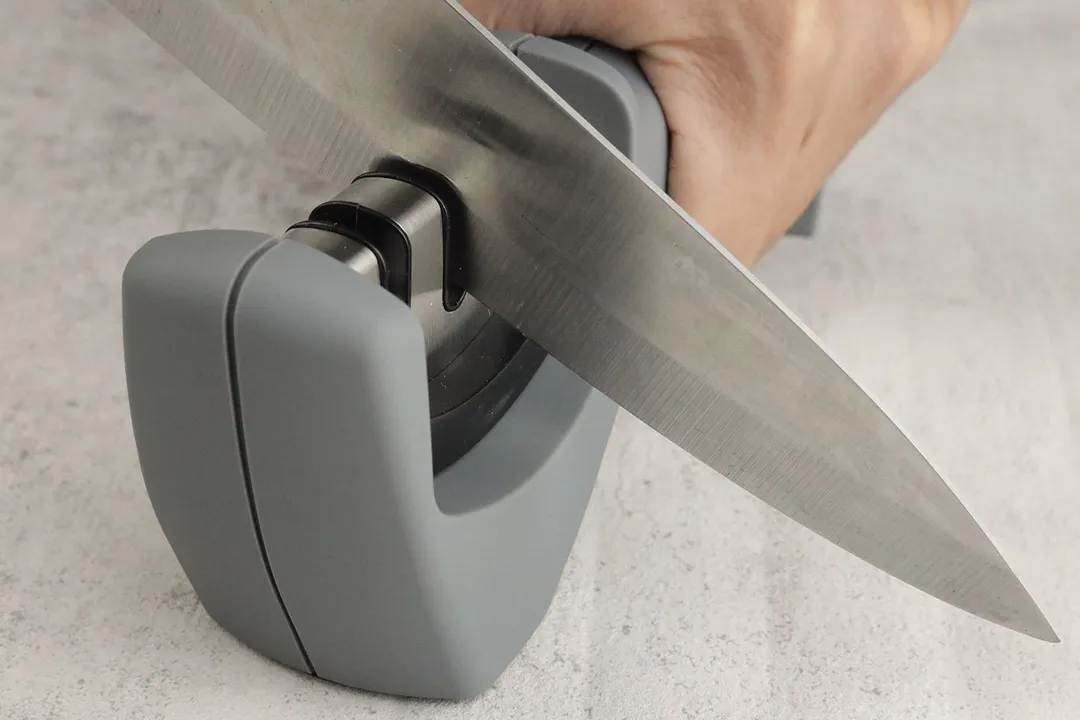
Stability on a Clean Surface
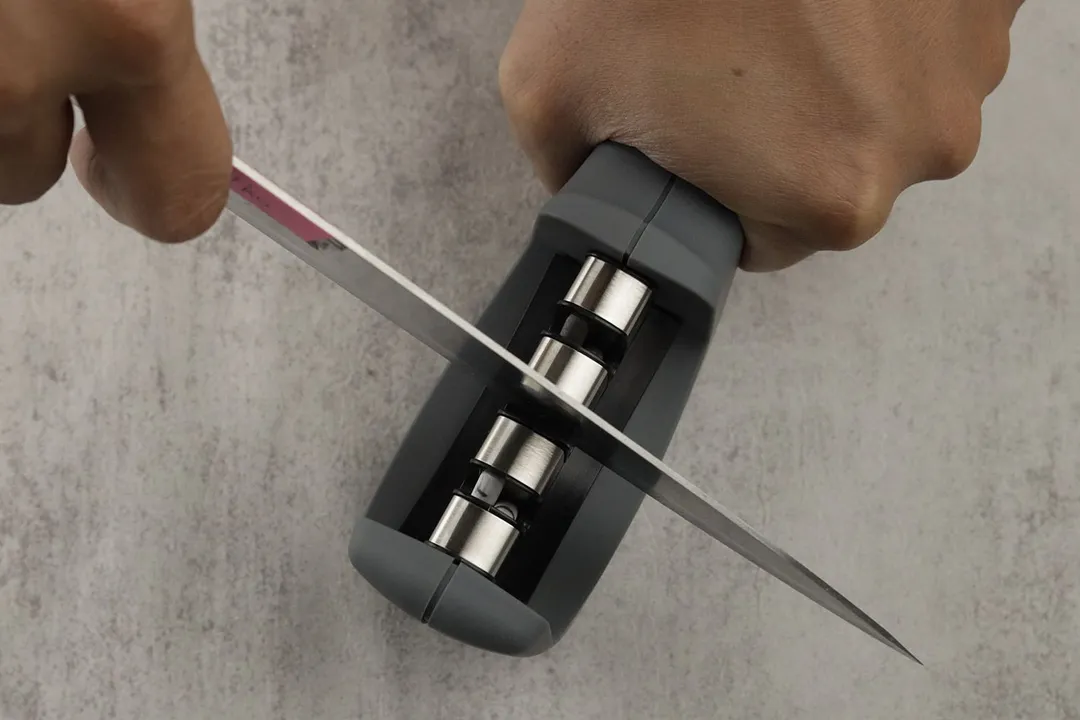
Stability on a Wet and Dirty Surface

Behind the Comparison
Anh Ngo is a writer with 9 years experience at different media outlets, covering from public news and events to product testing and analysis. At HealthyKitchen101, she works across different departments, communicating closely with its network of writers, editors, and health, tech, and search engine experts to provide a meaningful and pleasant reading experience for visitors.
Lap is Head of the Research, Testing, and Review Team (RTR Team) at HealthyKitchen101.com, where he directs and supervises the testing of kitchen gadgets and appliances.
Nguyen Ntk is a graphic designer, photographer, and videographer whose philosophy centers around respecting and celebrating the beauty of reality. Through his lenses, Nguyen strives to capture the true essence of objects and events, showcasing and highlighting authentic features without distortion or exaggeration.



